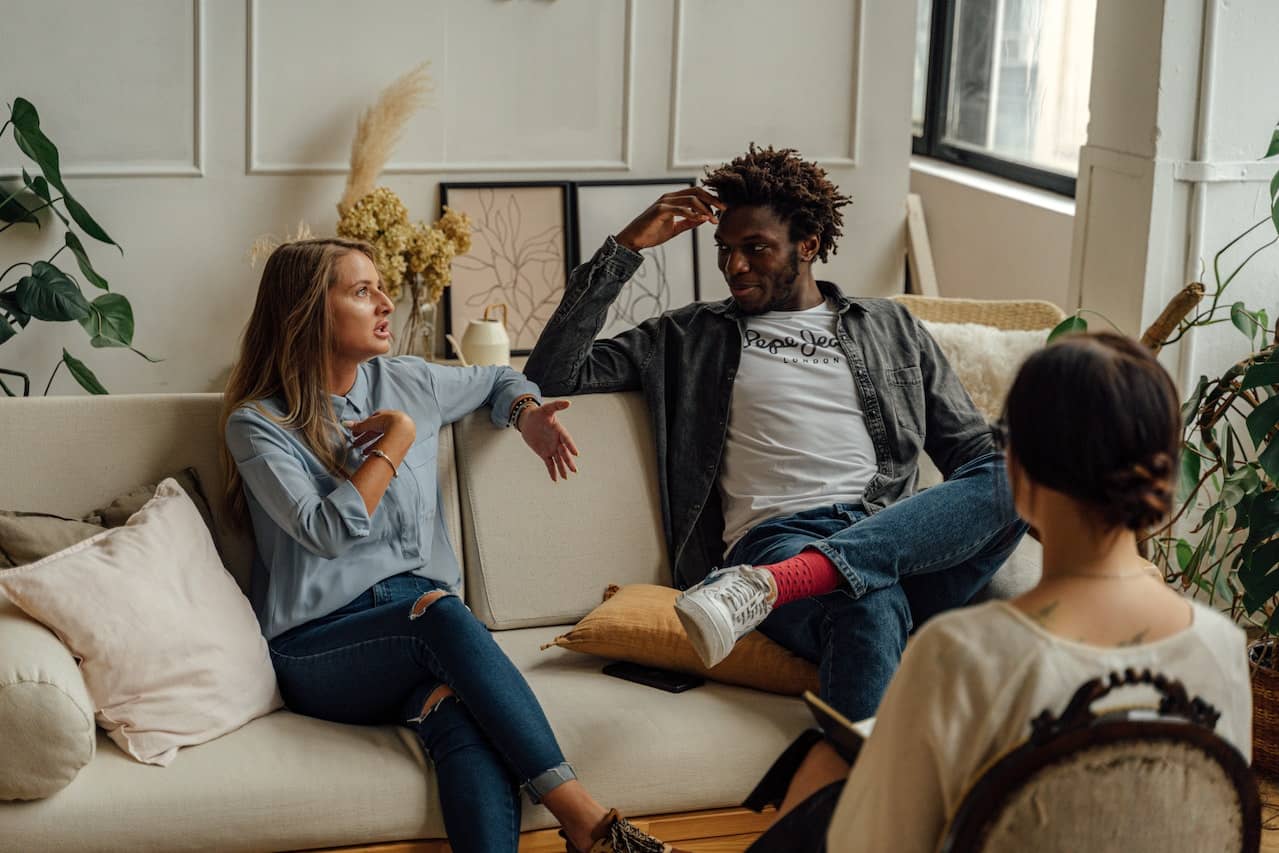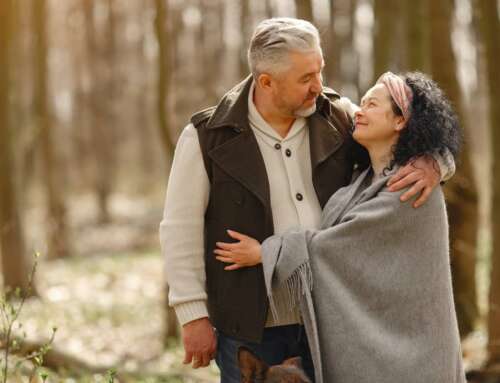As a Certified Sex Coach, one of the biggest sexual concerns you’ll deal with is a mixed libido relationship. While working with people who have this concern, you’ll often find that the problem they have is two desire (or arousal) styles that seem to oppose one another: responsive and spontaneous.
You might coach a solo client who comes without their partner(s), but in order to address this concern as comprehensively as possible, working with all parties is best.
Coaching a couple, as we know, can be more complicated than coaching a solo client. When coaching a couple, it is as if you have three clients to attend to: each person individually, and then the couple as the third entity.
In this article, I’m going to refer to a couple as two individuals for ease of language, but a couple might include more than two people. Gender and orientation are not important in this discussion because regardless of these aspects, desire styles fall into these two basic categories.
The Two Basic Desire Styles
Spontaneous desire is what most of us are used to seeing in movies and media. It describes someone who seems to “always” be thinking about sex and is “ready to go” at any time. A person with this type of desire style seems to only need to think about sex in order to be willing to proceed. Heteronormative culture typically casts men in this style.
Responsive desire, by contrast, represents the need to be more intrinsically and extrinsically motivated to have sex. In other words, more things need to happen for a person with this desire style to become aroused. American pop culture would have us believe that women mostly fall into this category. The truth is any gender can identify with either desire style and arousal pattern.
A common human condition is to assume that the rest of the world operates the same way we do. It’s difficult to hold space for the idea that someone else doesn’t do or react to things the same way we naturally do them, even when those people are our loved ones and sexual partners.
To further complicate the matter, we are all dynamic and changing. Who our clients were when they met their partners are not who they are today. As coaches, we need to remind our clients of this fact. The trick is then giving them the language that can help them communicate their needs and express how they feel as the relationship evolves.
The Opposing Desire Style Dynamic
So what do you do when your client couple comes to you with both of these styles represented? They have a typical mixed libido relationship where one of the partners wants sex more than the other.
Here’s a common example of what this relationship dynamic looks like. The person with the spontaneous desire, let’s call him Sam, has been with his partner, Rick, for five years. Rick has a responsive desire style. When they met, Sam and Rick had a passionate sex life. Rick enjoyed the new relationship energy and his normally responsive style felt spontaneous with all of the neurochemicals that flood the brain during initial attraction. Because they were just getting to know each other, Sam and Rick both enjoyed exploring all the ways they could turn each other on. As time passed though一both men’s brains regulated to the deeper attunement phase of the relationship一their sex life started cooling off.
Rick seemed to want sex less and less. Sam still wanted Rick every day, or at least as often as possible, but Rick would find excuses to avoid sex. When Sam would kiss Rick and he kissed him back, Sam would get excited, thinking *maybe* sex was happening.
Rick enjoyed kissing his partner but didn’t want to feel obligated to have sex just because they were being intimate. He loved Sam and couldn’t identify WHY he didn’t want to have sex with him anymore. He enjoyed it when they did become intimate, but he never initiated sex even though he knew that’s what Sam wanted. He began to withdraw even the slightest acts of affection and began to feel resentment.
Sam felt like he was always the pursuer and no matter what he did, Rick turned him down. He began to take it personally, thinking Sam must not enjoy the sex they were having. He even wondered whether Rick was having an affair and considered it himself as he felt very lonely. They come to you wanting to know how to fix their relationship.
If you’ve ever read any of my other articles or even heard me talk about coaching, you know I like to use fitness analogies (I am also a certified personal trainer and group fitness instructor with over a decade of experience). There are two types of people who work out at a gym. One is the type you’ll find (in the free weight section usually) who lives to lift! They can’t wait to get to the gym and often qualify working out as their favorite hobby.
The other type of person knows they should go, but has a little protest before every gym visit. They stress and fret over what they’ll wear and how they’ll look in the fitness class they’re enrolled in. They worry about things like having the right water bottle (which may seem like an unimportant detail, but can be obsessed about by this type of person). Before every class, they question why they even signed up and walk into the gym slightly stressed out.
However, once the class starts and they begin to move their bodies, the stress melts away. If the instructor is doing their job well, the participant forgets how awkward they felt when they came into the room and find themselves immersed in the music and the feeling of intention and physical exertion.
Both gym members leave feeling sweaty, spent, and with huge smiles on their faces. Neither one regrets going, even if it took a lot more mental work for one to get there than the other. Sex is like the gym for many people.
How to Address Opposing Desire Styles in Coaching
First, as a coach, we need to help our clients understand that both types of desire styles are valid and common. In the gay relationship example above, Spontaneous Sam isn’t the “right” way to be and there is nothing “wrong” with Responsive Rick. Sam doesn’t want “too much” sex even if Rick accuses him of wanting it “all the time.”
Having a spontaneous desire style does not make Sam a sex addict. And if he turns to pornography in order to find pleasure, he is likely not addicted to pornography. Alternatively, Rick is not frigid or a tease. He really enjoyed sex with Sam initially so he probably isn’t asexual. He truly loves his partner and is likely confused by his lack of obvious desire.
Responsive clients need to be able to recognize their needs in order to share them with their partner. They might need help unwinding from their day before being able to feel relaxed enough to be sexy. Like the frazzled gym class attendee, they may find it difficult to overcome the stressful details before anything even starts.
Using rituals before sexy time can help them let go of the stress that they naturally feel. Such rituals could include taking a warm shower or bath, meditating or doing intentional breath work alone or together, exercising or doing yoga, enjoying a meal together where conversation around the responsibilities of the day are either avoided or processed out loud.
Additionally, some responsive clients are very sensitive to their environment, and details such as room temperature, lighting, smells, and outside noise can either impede or help facilitate desire. For some clients, slow physical connection is necessary. Kissing, massage, eye gazing, and slow dancing work as the momentum needed for sex.
You may point out to your clients that a lot of these activities happen during the initial dating/courtship phase of the relationship but dwindle as time passes. That’s why so many responsive desire clients seem to “pass” as having spontaneous desire at the outset of their relationships.
It’s important that each partner in the couple recognizes that there is nothing wrong or needy about what’s necessary for the responsive client to feel sexy. Oftentimes, a spontaneous desire client will complain that it feels like “the stars need to align” in order for the responsive client to get turned on, or it only happens on vacation or when they are out of the house. It might be the only time a responsive client feels like it’s safe to be sexual because there aren’t any kids who could walk through the bedroom door, or there isn’t laundry laying around reminding them of their chores. Something as simple as using a lock on the bedroom door or cleaning up the bedroom goes a long way!
Reminding the spontaneous client of how great it felt in the beginning of the relationship to develop intimacy with their partner can help them put their spontaneous partner’s needs in perspective.
Both clients need to recognize that spontaneous partners might need reassurance that the steps to relaxation and connection can be fun to incorporate into sex! Sex, after all, is more than orgasm. Spontaneous clients can work to let go of any shame they have about wanting sex and thinking about it often. They can help their partner by focusing on the intimate acts of connection rather than simply the sex acts and orgasmic results.
With these types of mismatched desire styles, it’s important to put the focus on intimacy and connection. That is often the missing ingredient from their stalling sex life.
Sex Coach U teaches the PLISSIT model of coaching: permission, limited information, specific suggestions, and intensive coaching/therapy. We start by acknowledging each clients’ needs and wants, validating them, and giving them permission to be the way they are. Then we help them understand their own desire style and how it affects their partner. We work with the couple to come up with ways to rediscover or create the intimacy that is so often missing.
It’s not always an easy fix and might take several sessions individually and together to make progress. But when one partner has a spontaneous desire style and one has a responsive one, a healthier relationship is possible, especially when both partners are willing to work together on their goal.
Curious about training to become a Certified Sex Coach™? Join the next live Info Session to meet the SCU team and participate in a live Q&A!








